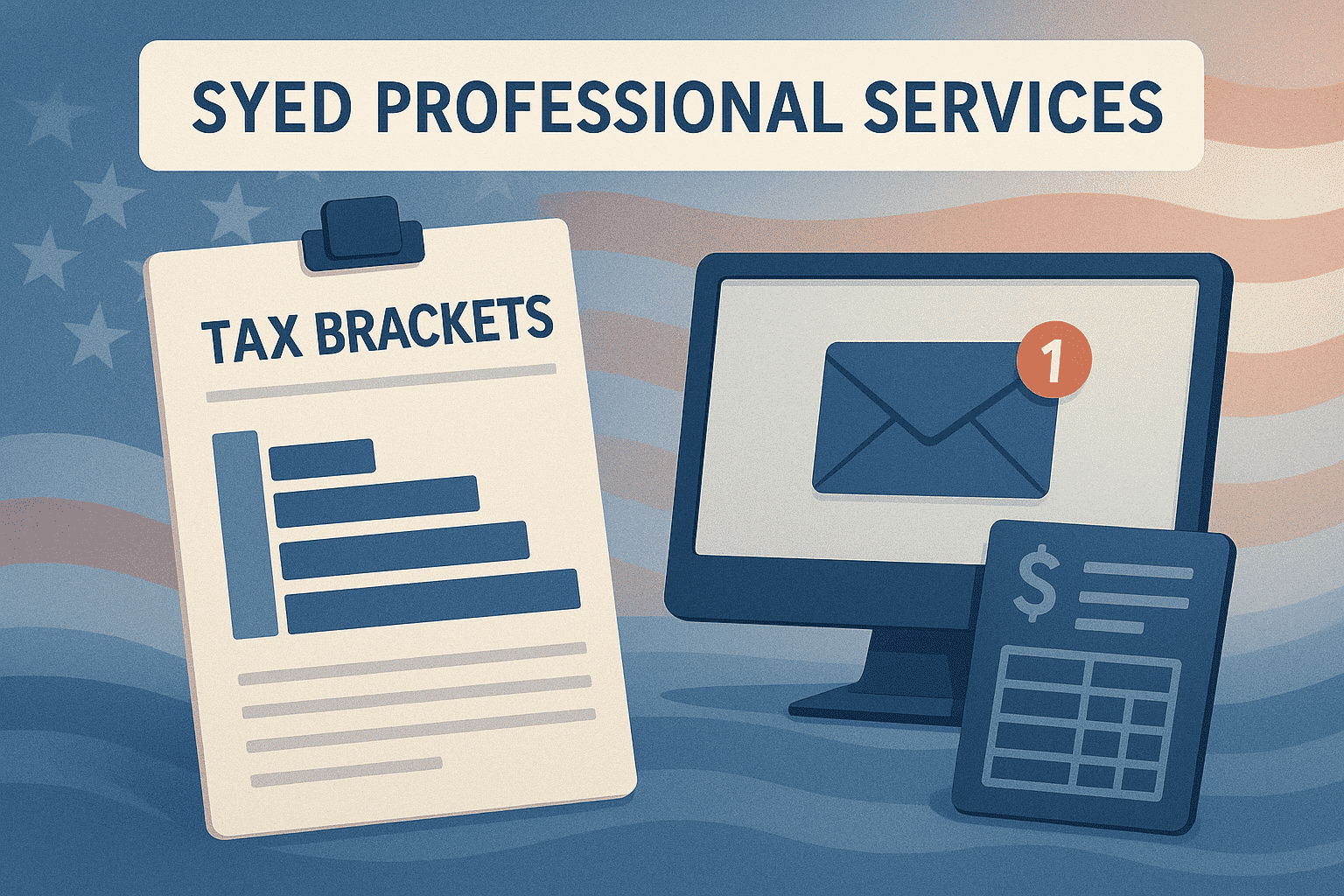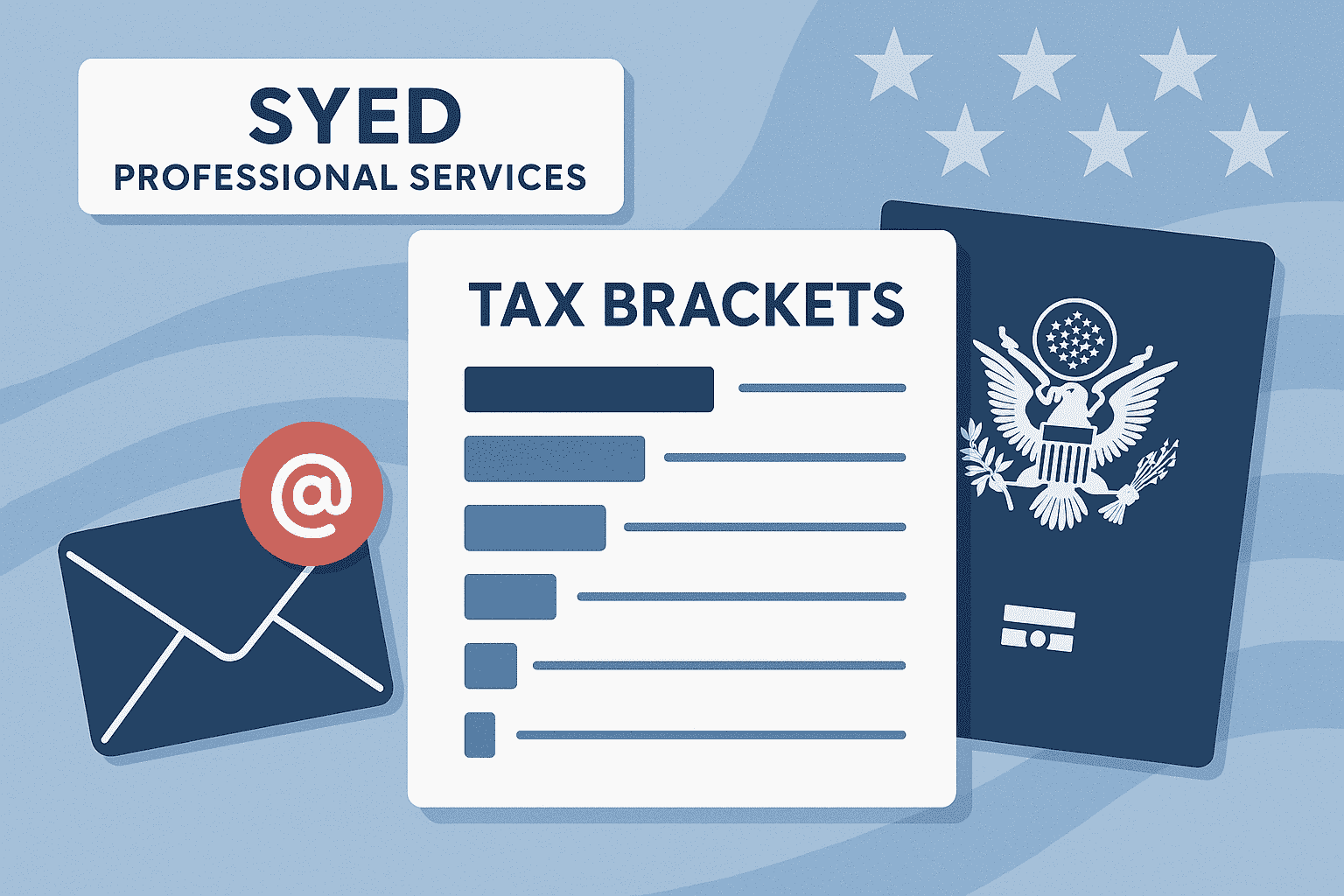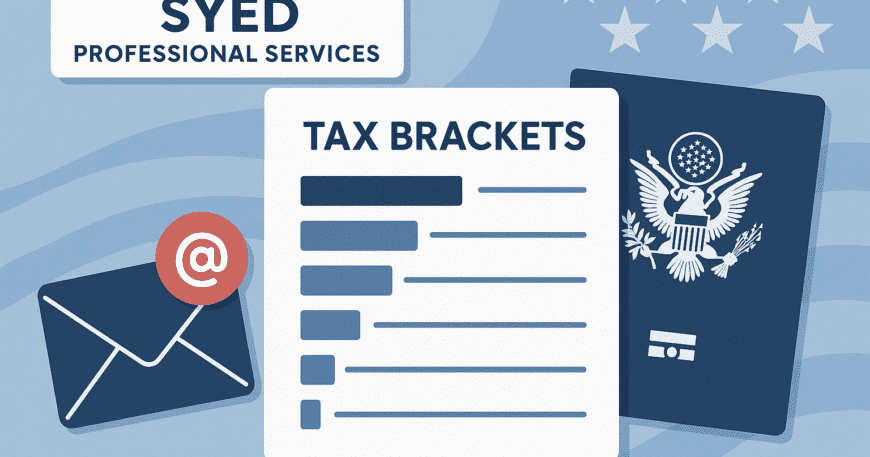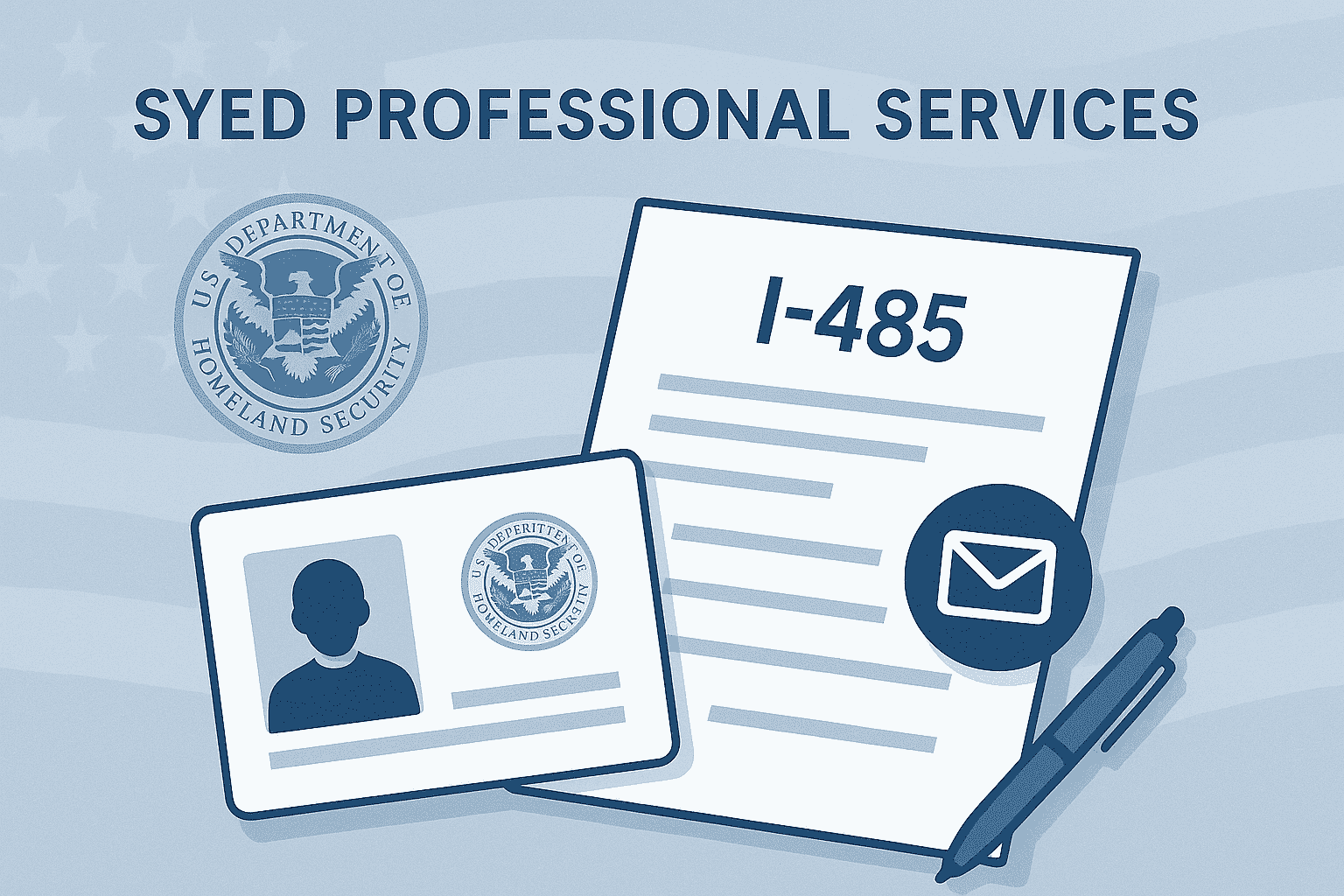Introduction
Tax season can be a stressful time for many. But understanding how tax brackets work is a crucial part of effective tax planning. Whether you’re a first-time filer or have been navigating the tax system for years, knowing how tax brackets affect your income can help you make informed decisions. If you’ve ever wondered, “What are tax brackets?” or “How do tax brackets impact my finances?”. You’re in the right place. We’ll break down what tax brackets are, how they operate, and provide a clear overview of the tax brackets for 2024 and 2025.
Whether you’re looking to plan, reduce your tax liability, or better understand your tax situation, this guide will cover everything you need to know.
What Are Tax Brackets?
Tax brackets are income ranges defined by the Internal Revenue Service (IRS) that determine the rate at which an individual’s income is taxed. The more you earn, the higher the tax rate you’ll pay on the portion of your income that falls within a higher tax bracket. The U.S. uses a progressive tax system, meaning that as your income rises, it is taxed at a higher rate. Different portions of your income are taxed at different rates.
The U.S. tax system is designed to be progressive, which means that you’re not taxed at the highest rate for your entire income. Instead, only the income that exceeds each tax bracket threshold is taxed at that bracket’s rate. This helps to reduce the tax burden for lower and middle-income earners while ensuring that higher earners contribute a fair share.
For example, if you earn $50,000 a year, the income in lower tax brackets is taxed at lower rates, and only the income above those thresholds is taxed at higher rates. This system is designed to make the tax code more equitable for people at different income levels.

How the Tax Brackets Work: An Example
Understanding how tax brackets work is essential for managing your taxes efficiently. Here’s a simple breakdown:
Let’s say you’re a single filer with a taxable income of $50,000. The IRS tax brackets for 2024 will apply as follows:
- The first $11,000 is taxed at a rate of 10%.
- The next $33,725 (from $11,000 to $44,725) is taxed at a 12% rate.
- The remaining $5,275 (from $44,725 to $50,000) is taxed at a rate of 22%.
Here’s how it looks in a more detailed breakdown:
- $11,000 x 10% = $1,100
- $33,725 x 12% = $4,047
- $5,275 x 22% = $1,161
So, your total tax liability would be $1,100 + $4,047 + $1,161 = $6,308. Notice that only the income above each threshold is taxed at a higher rate, ensuring that you’re not paying a higher rate on all of your income.
This progressive system is designed to keep the tax burden fair, ensuring that lower-earning individuals aren’t penalized for earning a little more than their peers.

What Are the Tax Brackets for 2024?
For 2024, the IRS has adjusted the tax brackets to account for inflation. These changes can impact your tax planning, so it’s essential to understand the current thresholds. Here’s a breakdown of the 2024 tax brackets:
- 10% Tax-Brackets: For individuals earning up to $11,000 (single) or $22,000 (married, filing jointly).
- 12% Tax-Brackets: For income over $11,000 to $44,725 (single) or $22,000 to $89,450 (married, filing jointly).
- 22% Tax-Brackets: For income over $44,725 to $95,375 (single) or $89,450 to $190,750 (married, filing jointly).
- 24% Tax-Brackets: For income over $95,375 to $182,100 (single) or $190,750 to $364,200 (married, filing jointly).
- 32% Tax-Brackets: For income over $182,100 to $231,250 (single) or $364,200 to $462,500 (married, filing jointly).
- 35% Tax-Brackets: For income over $231,250 to $578,100 (single) or $462,500 to $693,750 (married, filing jointly).
- 37% Tax-Brackets: For income over $578,100 (single) or $693,750 (married, filing jointly).
These brackets apply to ordinary income such as wages, salaries, and interest income. Keep in mind that these are marginal tax rates, meaning that they apply to specific portions of your income and not your entire income.
What Are the Tax Brackets for 2025?
Looking ahead to 2025, the IRS is expected to adjust tax brackets to account for inflation. While the final tax brackets for 2025 haven’t been released, you can expect them to increase slightly to adjust for inflation. This could result in a lower tax burden for many individuals, especially those near the upper ends of their current tax brackets.
Once the IRS officially releases the 2025 tax brackets, it’s essential to review the new thresholds, as they could impact your tax planning and strategies. We will update this post once the IRS announces the official tax brackets for 2025.
How Do Tax Brackets Affect Your Finances?
Knowing how tax brackets work can help you plan and make smart financial decisions. As your income increases, it’s essential to understand how your income is taxed at different rates. For instance, if you’re on the cusp of a higher tax brackets. You may want to consider contributing to retirement accounts, utilising tax credits, or adjusting your filing status to reduce your taxable income.
It’s also important to consider your filing status. Your filing status (single, married filing jointly, married filing separately, head of household) significantly impacts which tax brackets you fall into. Understanding how your filing status interacts with the tax-brackets can help you optimise your tax return.
For example, a married couple filing jointly may be able to take advantage of higher thresholds for specific tax brackets. This can allow them to keep more of their income in the lower tax brackets compared to someone who is filing as a single taxpayer.
What Is the Highest Tax Bracket?
The highest tax brackets for 2024 is 37%, which applies to individuals with income over $578,100 (single) or $693,750 (married, filing jointly). If you fall into this bracket, it’s essential to understand that only income above these thresholds is taxed at the highest rate.
For example, if you’re a single filer earning $600,000. Only the income above $578,100 would be taxed at the 37% rate. The portion of your income below that threshold will be taxed at the lower applicable rates, such as 24% or 32%.
For high earners, there are various strategies to reduce taxable income and possibly avoid the 37% tax rate on some portions of income. These strategies may include contributing to retirement accounts, making charitable donations, or utilising tax credits.
How to Minimise Your Taxability Within the Tax Brackets
If you want to reduce your tax burden and stay within a lower tax brackets, here are several strategies you can use:
- Maximize Retirement Contributions: One of the best ways to reduce taxable income is to contribute to retirement accounts, such as a 401(k) or IRA. These contributions are often tax-deductible, meaning they reduce your taxable income, which could help you fall into a lower tax brackets. Plus, retirement savings grow tax-deferred, which means you don’t pay taxes until you withdraw the funds in retirement.
- Take Advantage of Tax Deductions and Credits: There are many deductions and credits available that can reduce your tax liability. The standard deduction is one of the most common, but there are also tax credits available for expenses such as child dependents, education, and energy-efficient home improvements.
- Utilise Tax-Advantaged Accounts: Health Savings Accounts (HSAs) and Flexible Spending Accounts (FSAs) are excellent tools for reducing taxable income. Contributions to these accounts are made pre-tax, which means they lower your taxable income for the year. Additionally, some of these accounts allow you to use the funds for qualified expenses without incurring tax penalties.
- Tax-Loss Harvesting: If you have investments in taxable accounts, consider utilizing tax-loss harvesting to reduce your tax liability potentially. This involves selling assets that have lost value to offset capital gains from other investments. This strategy can help reduce your taxable income and lower your overall tax liability.
- Charitable Donations: Donations to qualified charities can reduce your taxable income. If you’re age 70½ or older, you can make qualified charitable distributions (QCDs) directly from your IRA to a charity, which can further lower your tax bill.
Conclusion
Understanding tax brackets is a crucial part of effective financial planning. By being aware of which tax brackets apply to your income, you can make informed decisions to minimise your tax liability and keep more of your hard-earned money. The U.S. tax system’s progressive nature means you’ll only pay a higher rate on the portion of income that falls into higher brackets, which helps keep the system equitable.
To make the most of your tax situation, stay updated on tax brackets changes. Take advantage of available deductions and credits, and consult with a tax professional if you need personalized professional services. We specialise in helping individuals and businesses optimise their strategies. Reach out to us for expert advice on tax planning, filing, and financial optimisation. We optimise to help you make the most of your income, minimise your tax, and ensure compliance with tax laws.
Call to Action:
Need help with tax planning?
Contact Syed Professional Services for expert tax advice and tailored solutions. Book a consultation today and start optimising your 2024 and beyond!




